Da Vinci Tourism: must-sees in Milan
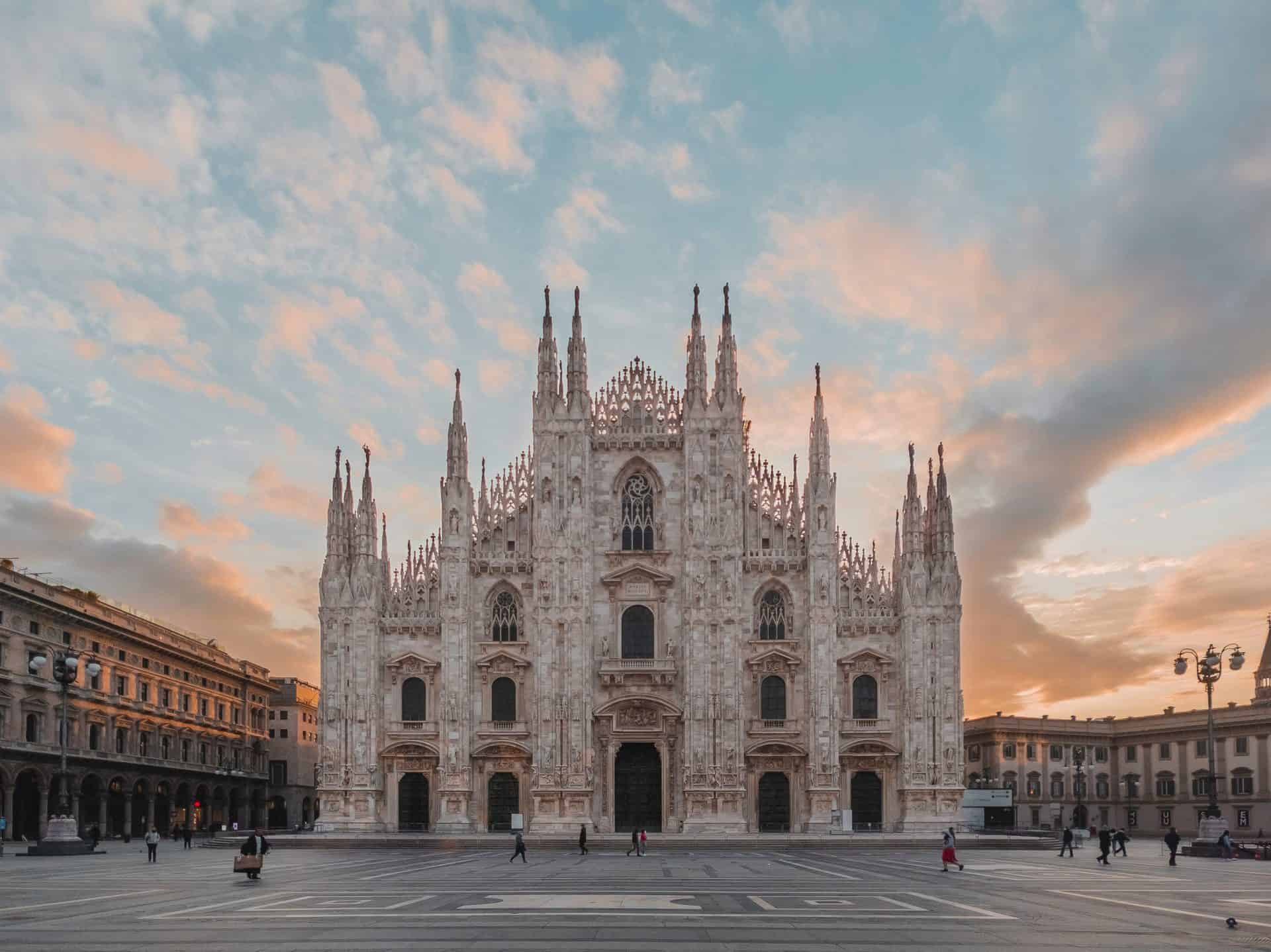
Updated On: November 07, 2023 by Ciaran Connolly
The second largest city in Italy, Milan is located in the Northern part of the country and served as the capital of the Western Roman Empire from 395 to 476 AD. It is a city world-famous for its contribution to art, literature, music, fashion, and it remains one of the world’s forerunners in education, research, finance, and healthcare. As a result, it is one of the most popular cities in Europe for tourists.
Although it is mostly known today for its vibrant fashion scene and two of Europe’s most successful football teams, A.C. Milan and F.C. Internazionale, Milan was also briefly the home of artist, scientist, and engineer, among other things, Leonardo da Vinci. Alongside its more popular tourist attractions such as the Piazza del Duomo, the city’s main square, and the Galleria Vittorio Emanuele II, the world’s oldest shopping mall, the city has much to offer for da Vinci enthusiasts.
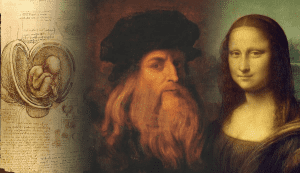
Who was Leonardo da Vinci?
Leonardo da Vinci was an artist, engineer, inventor, sculptor, and scientist who thrived during the height of the Italian Renaissance (1330-1550). He is most famous for his half-portrait Mona Lisa (approx. 1503–1506), his depiction of The Last Supper (1495–1498), and his drawing of the Vitruvian Man (1490). His preserved notebooks also indicate a scientific inventiveness and creativeness centuries ahead of his time; his explorations include an apparatus for breathing underwater, a mechanical organ, and a concave mirror that would kindle a fire quicker and with more vigor than human hands. Early ideas also included “the bicycle, airplane, helicopter, and parachute some 500 years ahead of their time”.
The illegitimate son of Ser Piero, a Florentine notary and landlord, da Vinci was born outside the town of Vinci in Tuscany – as his parents were unmarried, he adopted the town’s name as his own – in April 1452. He grew up with his father as his mother, Caterina, married an artisan and moved away. Raised and treated as if he were legitimate, young da Vinci was educated in reading, writing, and arithmetic.
When he turned 15, da Vinci was made an apprentice to sculptor and painter Andrea del Verrocchio in Florence before becoming an independent master in 1478. His existing work from this period indicates an interest in the technical side of things; there are many sketches of mechanical apparatus, military weapons, and water pumps. In 1482, da Vinci moved to Milan to work for the Sforzas, a prominent royal Milan family, the head of which, Ludovico Sforza, was the Duke of the city. He was the royal family’s official painter and engineer. Historians theorize that da Vinci was attracted to Milan’s academic and artistic atmosphere.
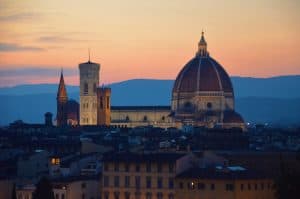
Da Vinci lived in Milan for seventeen years, and it was from 1495 to 1497 that he produced his world-renowned mural of The Last Supper in the Monastery of Santa Maria delle Grazie’s refectory. He returned to Florence in 1499, however, after the Sforzas fell from power. His time in Florence enabled him to produce the famous Mona Lisa and to indulge in scientific studies; he was fascinated by anatomical work and embarked upon serious study of the structure and function of the human organism.
Da Vinci returned to Milan in 1508 and remained there until 1513. He was greatly respected by Charles d’Amboise and King Louis XII and was often consulted on architectural matters. Although he painted little during this period, he sculpted a lot and produced manuscripts filled with mathematical, optical, mechanical, geological, and botanical studies. According to Ludwig Heinrich Heydenreich, Director of the Central Institute for the History of Art in Munich, “these investigations became increasingly driven by a central idea: the conviction that force and motion as basic mechanical functions produce all outward forms in organic and inorganic nature and give them their shape. Furthermore, he believed that these functioning forces operate in accordance with orderly, harmonious laws”.
Da Vinci’s last years were spent in France. Having accepted King Francis I’s offer to be the “First painter, architect, and engineer to the King”, da Vinci left Italy with his most devoted pupil, Melzi, and resided in Cloux (later called Clos-Lucé). It was close to the king’s summer palace at Amboise on the Loire. His main interest whilst in France was his scientific endeavors, particularly anatomy. Da Vinci passed away in May 1519, aged 67. He was buried in the collegiate church of Saint Florentin at the Château d’Amboise in August 1519, but the current location of his remains is uncertain
The goldsmith and sculptor Benvenuto Cellini reported, twenty years after Da Vinci’s death, that King Francis I lamented: “there had never been another man born in the world who knew as much as Leonardo, not so much about painting, sculpture and architecture, as that he was a very great philosopher”.
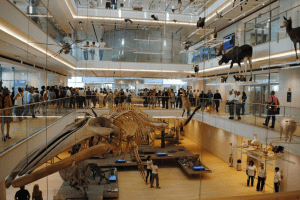
Museo Nazionale Scienza e Tecnologia Leonardo da Vinci
The Museo Nazionale Scienza e Tecnologia Leonardo da Vinci is the largest science and technology museum in Italy. Established in 1953, it is entirely dedicated to the life and works of Leonardo da Vinci. It is located in Milan’s ancient monastery of San Vittore al Corpo; built in the 6th century, it was previously a hospital and military headquarters before it was reconstructed in 1947 after damage inflicted during World War II. The museum attracts over 50,000 visitors per year and is one of the four major science and technology museums in Europe, the others being the Science Museum of London, the Deutsches Museum in Munich, and Universcience of Paris.
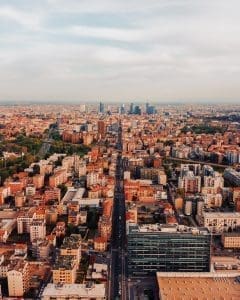
The museum has three main objectives. Firstly, “rediscovery of the result of its dedication to Leonardo da Vinci as a symbol of the union of humanistic and scientific cultures, and as a starting point for building a vision based on the meeting of branches of knowledge and their interconnections”. Secondly, to “transmit to present generations (by interpreting and enhancing accessibility) and to future generations (by protecting assets) one of the most relevant aspects of our identity, in a perspective including both the local and global, namely, the evolution of science, technology, and industrial production, as the underlying basis of contemporary society, through safeguarding and critical interpretation of material and immaterial testimonies of history”. And thirdly, to “actively involve citizens in the construction of a scientific citizenship; to raise awareness among stakeholders on important issues; to educate new generations in STEM fields (Science, Technology, Engineering, Mathematics) making use of innovative methodologies; to develop public engagement programs to foster a direct relationship between citizens and the scientific community”.
The museum is made of seven components. The first is materials, which showcases the life cycle of products from their raw materials to the recycling stage. The second is transport, which in turn is split into four sections: the water transport section, which includes a slow running torpedo and the training ship Ebe launched in 1921; the air transport section, which includes a Farman 1909 replica and an innovative Macchi MC 205 V used during World War II; the rail transport section, which includes vehicles from 19th and 20th century with a focus on the historical public transport of Lombardy; and finally, the fourth section is entirely dedicated to the Toti-class submarine Enrico Toti, built by Italian shipbuilders after World War II. The third component of the museum is energy, which is devoted to the source, storage and usage of energy such as oil and thermoelectricity. The fourth is communication, which showcases the development of astronomy, telecommunication, and sound. Fifth is the Leonardo da Vinci: art and science component, which includes original drawings by da Vinci exploring mechanical devices like a hydraulic saw and a flying machine, a horology (watchmaking) section, a jewellery section, and a musical instruments section. The museum also caters to children interested in science with their new frontiers, and science for young people exhibitions.
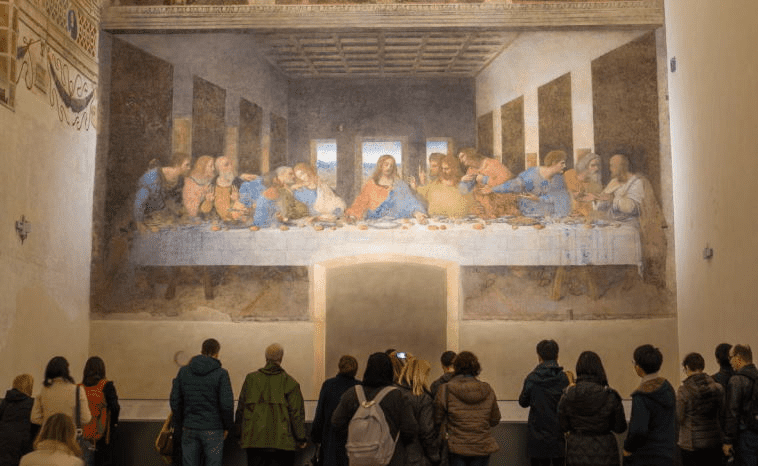
The Last Supper
The Convent of Santa Maria delle Grazie houses one of da Vinci’s most famous creations and one of the most important paintings in art history, a mural depictingThe Last Supper, a meal that took place before the death of Jesus in the Christian canon. The building is a beautiful example of gothic and renaissance architecture, and it is a rare feature in the art world for it is one of the few locations where the art that was originally created there remains a permanent part of its aesthetic.
The painting itself is 4.60 meters high and 8.80 meters wide, and rather than using the traditional method of fresco painting – “a technique of mural painting executed upon freshly laid lime plaster. Water is used as the vehicle for the dry-powder pigment to merge with the plaster, and with the setting of the plaster, the painting becomes an integral part of the wall” (a famous example is The Creation of Adam) – da Vinci painted the scene dry. Historians have discovered that da Vinci carried out exhaustive and meticulous research, creating numerous preparatory sketches, to ensure the mural looked as realistic as possible. The painting has undergone many restorations in the past, the most recent in 1999 “where several scientific methods were used to restore the original colours as close as possible, and to eliminate traces of paint applied in previous attempts to restore the fresco”.
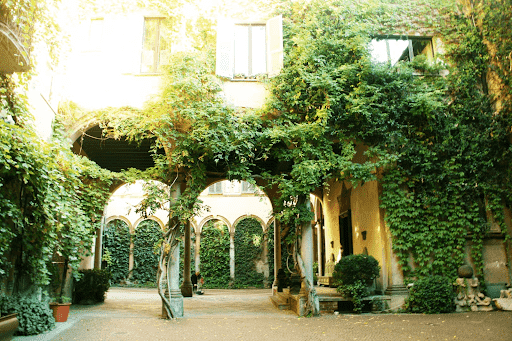
Leonardo da Vinci’s Vineyard – Milano, Italy
The Last Supper took four years to complete. As the painting was nearing its conclusion, da Vinci would retire to his vineyard across from the Convent of Santa Maria delle Grazie. The vineyard was a gift to da Vinci from his employer Ludovico Sforza, the Duke of Milan. This greatly pleased da Vinci for his family had a rich history of winemaking and owning property in the city granted him status as an official Milan citizen. This did not happen, however, as Ludovico Sforza lost power just a few months later. Da Vinci was forced to abandon Milan when it was invaded by French troops in 1499; leaving his precious vineyard behind greatly saddened him.
Despite falling into disrepair, the vineyard was eventually purchased by “Ettore Conti, an engineer and magnate of the Italian electricity industry, and restored in the 1920s by the famed Milanese architect Piero Portaluppi”. The building was practically destroyed by bombing during World War II, however, and it was not until 2015 that Portalupp’s grandchildren restored the vineyard to its former glory. They even worked alongside oenologist Luca Maroni and the University of Agricultural Sciences in Milan to study the grapes that originally grew there – Malvasia di Candia Aromatica – and they replanted the vineyard exactly as it had been when da Vinci was there.
Tourists are able to stay in the refurbished house on the grounds, take tours of the vineyard, and sample wine da Vinci himself would have tasted.
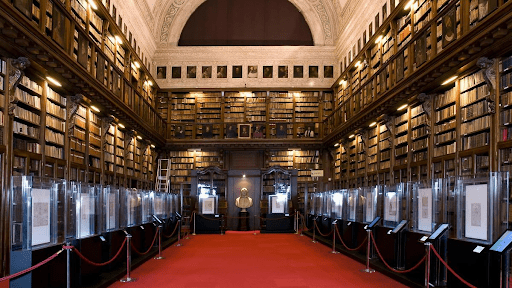
Pinacoteca Ambrosiana – Milano, Italy
The Pinacoteca Ambrosiana is one of Italy’s most historic libraries and art galleries. Founded in 1609 by Cardinal Federico Borromeo, it was named for Ambrose, the patron saint of Milan, and it was quickly filled with Borromeo’s own collection of sketches, paintings and sculptures, as well as books and manuscripts from Western Europe, Syria and Greece collected by Borromeo’s agents. The Pinacoteca Ambrosiana was established as a model and support for Milan’s Academy of Fine Arts (1621 – 1776) and was designed to “ensure a free cultural and artistic training to anyone with artistic or intellectual capabilities”.
The library acquired various paintings and twelve manuscripts of Leonardo da Vinci’s, including the Codex Atlanticus, shortly after Borromeo’s death in 1631. These have been on permanent display since 2009. As well as possessing valuable da Vinci works, the Pinacoteca Ambrosiana also houses some of the most important manuscripts and artwork in human history, including the Ilias Picta, a 5th-century illuminated manuscript on vellum, which depicts the entirety of Homer’s Iliad, the Uncial 0135 — fragments of the gospels of Matthew, Mark and Luke, and sections of Aristotle’s treatise On the Soul.
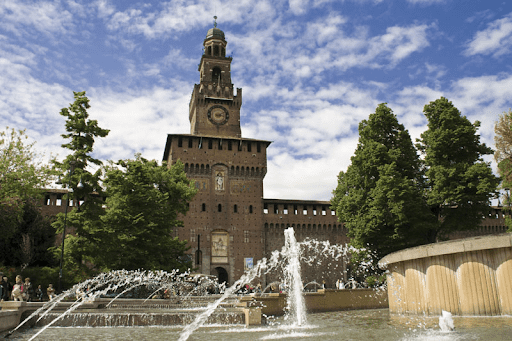
Sforza Castle – Milano, Italy
Sforza Castle was the home of da Vinci’s employer, the Duke of Milan. Originally a Visconti fortress that was almost entirely destroyed by the Golden Ambrosian Republic, it was taken under the wing of the Sforza family and transformed into a beautiful palace decorated by some of the most famous artists of the high renaissance, including da Vinci. After the Sforza’s fell from power, it once again became a fortress during the Spanish and Austrian domination of the city. It fell to ruin over the centuries as different rulers neglected its upkeep, and it was not until the early 20th century that it was restored by architect Luca Beltrami.
Alongside being a tremendously impressive fortress, the Sforza castle now houses several museums:
- “The Museum of Ancient Art: This museum houses the Sforza family’s frescoes and sculptures of great value from various eras like Antiquity, the Middle Ages and the Renaissance period. The highlights of the museum include the Rondanini Pietà, the last and unfinished work by Michelangelo
- The Pinacoteca del Castello Sforzesco: This art collection is made up of over 1.500 works of art created between the thirteenth and eighteenth centuries
- The Museum of Musical Instruments: This museum contains curious instruments from all over the world
- The Egyptian Museum: The Egyptian Museum houses several objects from Egypt, including statues, mummies, sarcophaguses and death masks
- The Archaeological Museum of Milan: This museum contains objects and items from the main cultures that lived in Lombardy from the Neolithic to the Romanization period
- The Applied Arts Collection: The museum shows the work of pottery makers, sculptors, upholsterers and weavers
- The Antique Furniture and Wooden Sculpture Museum: The museum features antiques dating from the fifteenth to the twentieth centuries. The furniture is displayed in various rooms representing several periods”






